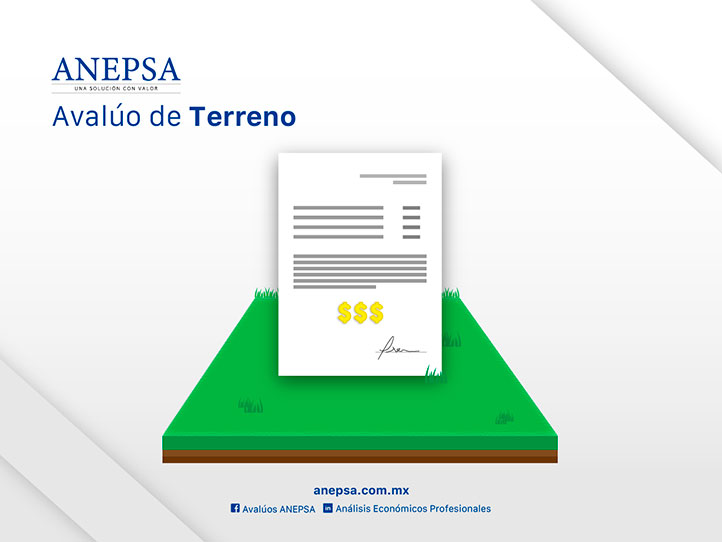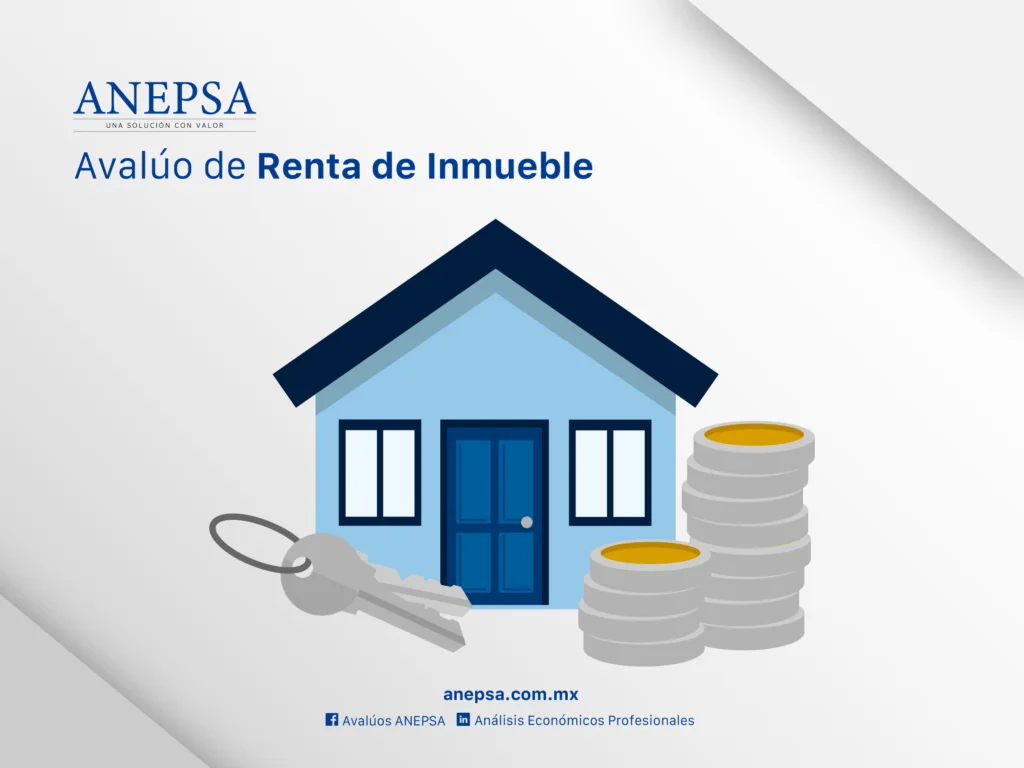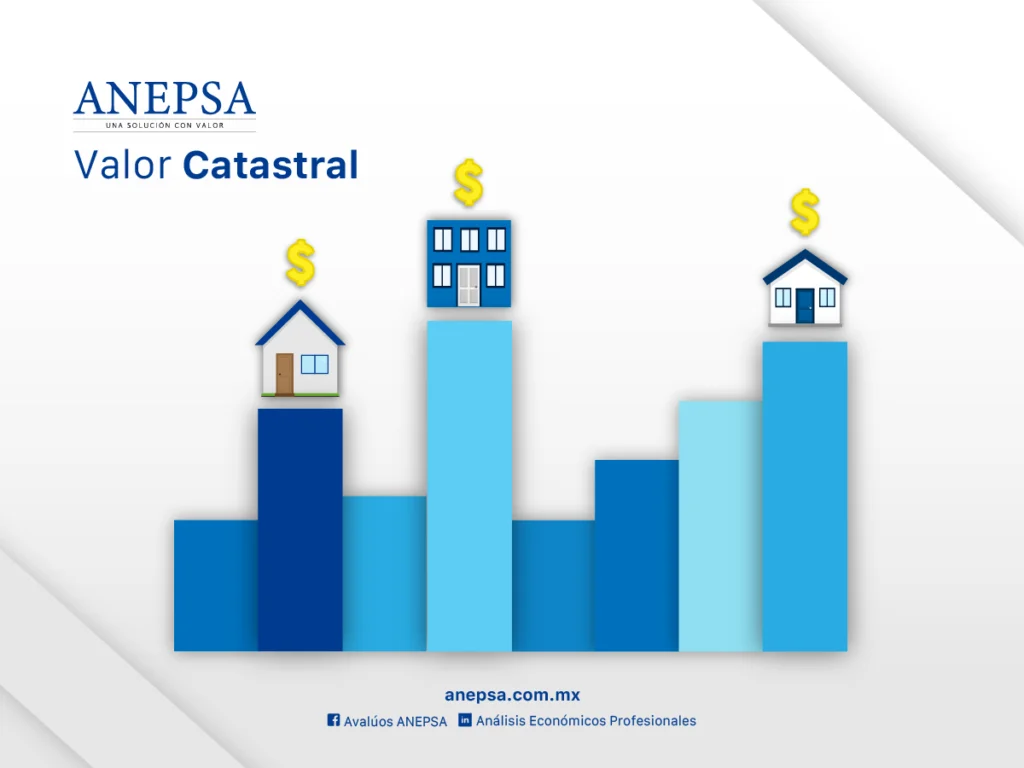Intangible Asset Valuation
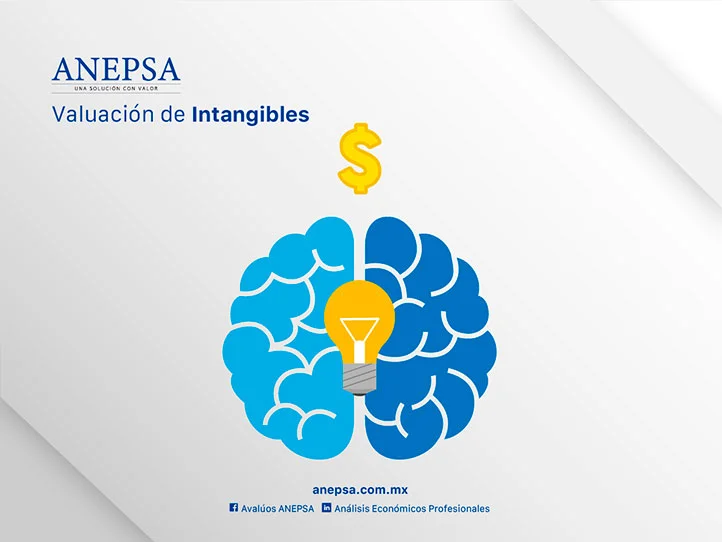
The assessment and knowledge of intangibles is one of the most important points for valuation, it gives a competitive advantage towards permanence and growth with respect to the sector or competition. An intangible asset is defined as “anything that does not have an apparent physical existence or presence, but can be visualized through economic benefits, contracts or documentation.” Most companies have a value of ⅓ in their intangibles and have not measured it.
What intangibles do we value?
| 1 Market | brands (Nominative, Unnamed, Mixed Three-dimensional) Market Image Websites Non-Compete Agreement |
| 2 Related to Client Portfolio | Client list Contracted Production Contract with Clients Non-Contractual Relations |
| 3 Intellectual or Artistic (Copyright) | Plays, operas, ballets Books, magazines, newspapers, Paintings, Photographs Audiovisual materials etc… |
| 4 Contracts or Rights | License, use and royalties contract Advertising, construction, administration, service or supply contracts exploitation concessions Lease Agreements Building Permits franchises Permits or supply rights |
| 5 Technological | patents technological Research and development in process Computer system and licenses, computer programs, etc. Non-patented technology Database Processes and confidential formulas Technical drawings and manuals |
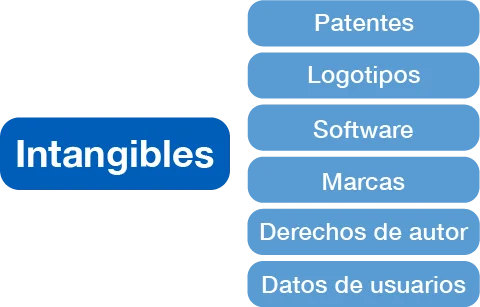
CONSIDER FOR CHOICE OF METHODOLOGY
What would a willing buyer pay for the intangible asset? • What is the useful life of this asset? • What portion of operating income does this asset generate?
When making the assignment of intangibles, there are common planning elements for all valuation assignments, such as the following:
- Purpose and objective of the analysis
- Define the intangible asset of the subject
- Understand the legal rights subject to analysis
- value date
- Highest and Best Use Considerations
- Report writing: telling an analysis of a story must be replicable.
However, the data collection will probably be different in the allocation of intangibles.
We need to consider the following:
- History and development of the intangible asset
- Owner or operator, or both
- Licensee or licensor, or both
- Industry trades and price data
- Competitive environment
- Intangible assets, commercial comparatives, cost and treatment
Intangible asset valuation methods
The valuation methods that are usually used to give value to intangibles are those based on the market itself, the valuation requires the measurement of a financial value.
Income Methodology:
Income-based models are best used when the intangible asset generates income or when it allows an asset to generate cash flow. As in other valuation assignments, an income approach technique converts future benefits.
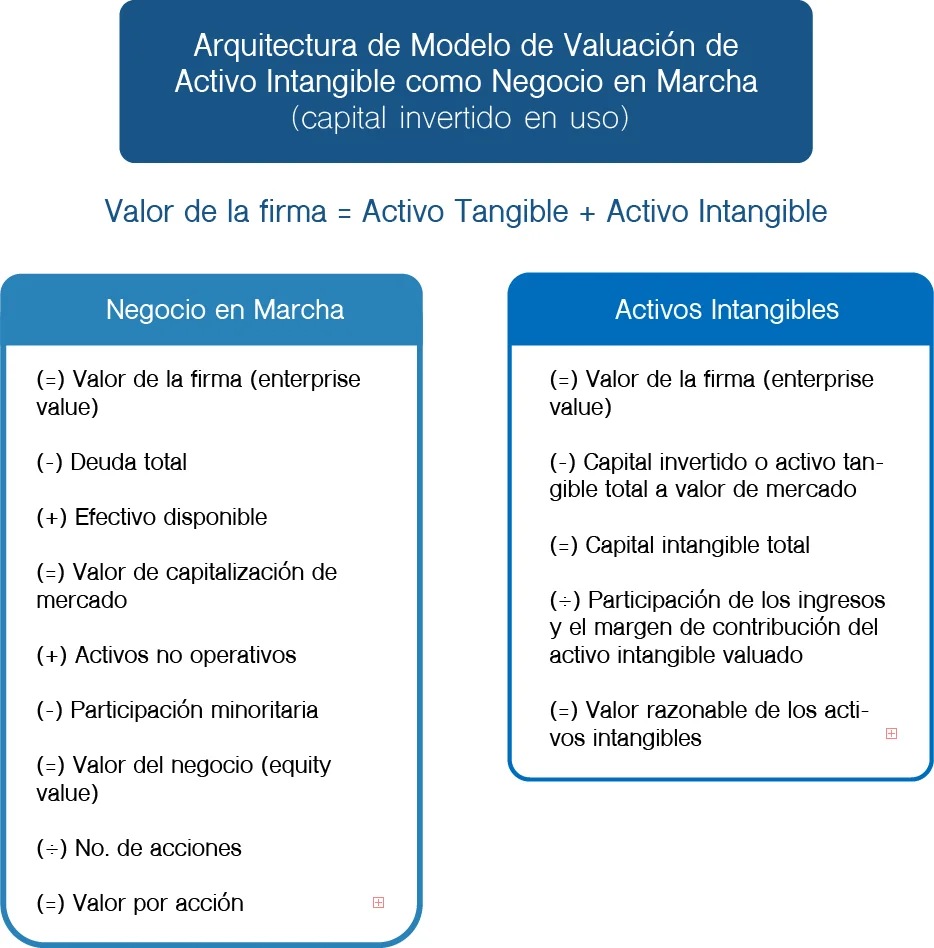
Multiples Methodology:
It is often difficult to obtain market-based transactions for identical or substantially similar intangible assets that have recently been exchanged in a long-range transaction:
1) Listing multiples based on Net Revenues – Top Line. Ex: (EV / Revenues)x
2) Quote multiples based on Operating Profits with and without D&A (EBITDA and EBIT) – Middle Line. Ex: (EV / Ebitda)x & (EV / Ebit)x
3) Listing multiples based on Net Earnings and Net Income per share (Bottom Line) Eg: PER (price earning ratio) Price to Sales x
Most common intangible valuation methods:
- cost method
- market price method
- Income method or (EVA)
- Valuation based on market position
- Skandia Browser
- Relief from Royalty Method
- EVE
- DCF (Dynamic Residual)
- MPEEEM
- Differential Value Methods
- wwm
- INTERBRAN Method
- VC approach
Cost Methodology
Cost-based analyzes are based on the economic principle of substitution and generally ignore the amount, timing and duration of future economic benefits, as well as performance risk within a competitive environment, historical cost reflects only the actual cost incurred to develop the asset, new reproduction cost implies the current cost of a new identical property, and new replacement cost implies the current cost of a similar new property.
The new reproduction cost implies the current cost of a new identical property, since the new replacement cost implies the current cost of a similar new property, having the closest equivalent utility to the property being valued, in most cases, the new replacement cost is the most direct and significant means based on the cost of estimating the value of an asset, once the new replacement cost is estimated, various forms of obsolescence must be considered, such as functional, technological and economic.
Purpose of valuing intangibles?
The purpose of a valuation of intangibles is derived mainly from the following points:
- Purchase-Sale or Transfer of the Intangible
- Determining a real estate value
- Early recognition of Good Will
- Consolidation of Financial Reports
- Mergers
- acquisitions
- litigation
- Tax Guarantee
- joint venture
- Tax Strategy
Benefits of Valuing Intangibles
1)Patrimonial benefit. – Allows business intangible assets to be correctly valued in market parameters.
2) Financial benefit.– A company that has its intangible assets well valued is usually more attractive to financial entities for granting credit and financing lines.
3) Tax benefit. – Duly recognized intangible assets have tax benefits such as tax amortization (Art. 32 and 33 LISR) and when they are managed correctly they have the tax benefits of the CUCA (Art.78 of the LISR). b
Standards and Certifications
We follow the corresponding and current regulations. We have the necessary certifications to provide a reliable and comprehensive service.

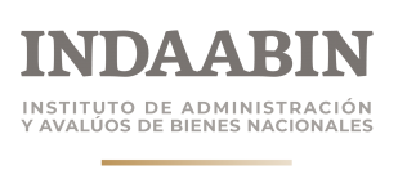

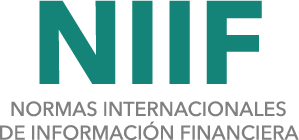
Some customers of this service






